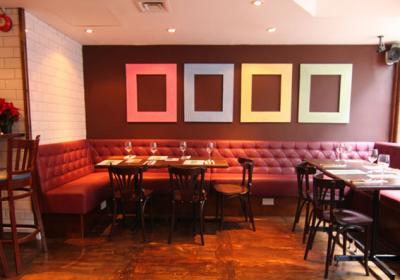Choose the Perfect Restaurant Seating With 5 Simple Steps
01/06/2014
Achieve restaurant seating that looks fantastic, functions well and even encourages your customers to spend more with these 5 simple steps.
1) Ensure you have flexibility in your seating plan
Fixed seating is great. You won’t find bigger advocates of it than us, but we know it’s limitations and are honest enough to admit them. Fixed seating limits flexibility. You need to have enough table and chair configurations so that if a large party arrives without a booking, for example, you can find room for them by pushing tables together. You can, however, still achieve a degree of flexibility with fixed seating by having straight run along a wall with tables and chairs opposite that can be configured to form 2-person tables or 12-person tables, but just make sure you have enough flexibility.
2) Have an exclusive collection of booths
It’s a really good idea to have a small amount of booth seating in your restaurant. Booths give us this sense that we are isolated from the rest of the restaurant, that we are in some way privileged. Studies have even proved that customers, on average, spend more in booths, but be careful… install too many booths and you lose that exclusivity, and your restaurant ends up looking like an American highway diner.
3) Choose a layout that leaves ample room between tables and enough room for walkways
We’ve talked about this before - it’s one of our big pet peeves. Make certain there is enough room in between tables (ideally no less than 500mm) and enough room behind chairs (800mm or more) so that your customers can enjoy their meals with a bit of privacy and comfort. There is nothing worse than cramming customers in purely to seat more people. In fact, this ends up being counter productive as it puts customers off coming back.
4) Consider your customer base when planning the sizes of your fixed seating
Know your customers. Know your positioning within the market. Your seating must reflect your brand and must cater for your customers and their intended use. For example, if you run a fast-food restaurant, you can opt for slightly smaller booths and fit more people in as your customers will be in and out relatively quickly, therefore comfort is not of paramount importance. If, however, you run a fine-dining establishment, comfort is key and you also want your customers to have plenty of room. Consider your customers and plan your seating accordingly.
5) Choose your theme and design carefully
The theme and design of your restaurant greatly influences how your customers perceive your restaurant, and seating is one of the biggest aspects of your interior design, therefore you need to ensure you choose the right design. These are the things you need to consider: seating shape (e.g. straight runs, back-to-back booths, circular booths), back style (e.g. plain backs, fluted backs, deep buttoning), colour, material (e.g. fabric, vinyl or leather), and even the finer details like kickboards and cappings. That’s where the fun begins, crafting seating to represent you and portray the image you want your restaurant to have.